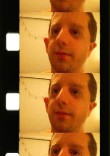|
Author
|
Topic: Eumig projector for telecine?
|
|
|
Jan Bister
Darth 8mm

Posts: 2629
From: Ohio, USA
Registered: Jan 2005
|
 posted June 01, 2005 10:13 PM
posted June 01, 2005 10:13 PM




Hi John and welcome to the forum! Let me do a quick rundown on your questions...
1) Theoretically no... either 18 or 24fps captured at 60fps (NTSC interlaced frame rate) will flicker... In practical terms, your mileage may vary, however. It depends on the camera, too, I think. Actually, what kind of sound movies are we talking about? You could of course capture your sound movies as if they were silent (using a 20fps speed), record the sound separately, change its playback speed and then match it to the captured video - but naturally music and voices wouldn't sound right anymore...
2) I have no idea. I'd be surprised, though, if they didn't both have a line-out. ![[Eek!]](eek.gif)
3) Ah, the Eumig museum... Yes, it sadly has gone defunct quite some time ago. Nothing like searching Google and finding references to sites that don't exist anymore. ![[Frown]](frown.gif)
4) Oh, I have no doubt on that one ![[Big Grin]](biggrin.gif) But have you actually considered either 1. having your (sound) films professionally transferred to miniDV by an experienced transfer lab or 2. investing money in a WorkPrinter XP from http://www.moviestuff.tv/? The WorkPrinter would allow you very high-quality, frame-by-frame capture directly to your computer and you could keep the proper playback speed of the captured film without any flicker or hotspot issues. But have you actually considered either 1. having your (sound) films professionally transferred to miniDV by an experienced transfer lab or 2. investing money in a WorkPrinter XP from http://www.moviestuff.tv/? The WorkPrinter would allow you very high-quality, frame-by-frame capture directly to your computer and you could keep the proper playback speed of the captured film without any flicker or hotspot issues. ![[Smile]](smile.gif)
--------------------
Call me Phoenix. *dusts off the ashes*
| IP: Logged
|
|
|
|
|
|
|
|
|
|
|
|
|
|
|
|
Michael De Angelis
Phenomenal Film Handler
Posts: 1261
From: USA
Registered: Jul 2003
|
 posted June 05, 2005 01:25 PM
posted June 05, 2005 01:25 PM




John,
I may not have tried or experienced capturing home movies to video,
but if you have a 'dimmer' capture that may not necessarily be a bad thing.
Because, you can edit or enhance the gain with darker images with an inexpensive video application known as Quick Time Pro.
Quick Time Pro, is a $30.00 upgrade to Apples Quick Time Player which is available for both Apple and the more Common PC clone products out on the computer market (DELL, Compaq, HP etc.) You can purchase online, or call Apple and request to purchase a 'Key' to unlock these great features if you already have Quick Time Player.
The 'Key' is a registration number which will unlock and give you full advantage of the Quicktime Application.
Currently, Apple is developing the new version, number 7 for PC, and should be out very shortly. If you wish to try this, it is cheap, and well worth the wait.
Check the Apple website and click on the Quick Time 'Tab' for details.
In Short, you can adjust the following: Brightness, Contrast, Color and Tint.
It's a cheap alternative to higher priced computer applications and worth a try.
Good luck with your project.
Michael
--------------------
Isn't it great that we can all communicate about this great
hobby that we love!
| IP: Logged
|
|
|
|
|
|
|



 UBBFriend: Email this page to someone!
UBBFriend: Email this page to someone!
 Printer-friendly view of this topic
Printer-friendly view of this topic



 UBBFriend: Email this page to someone!
UBBFriend: Email this page to someone!
 Printer-friendly view of this topic
Printer-friendly view of this topic